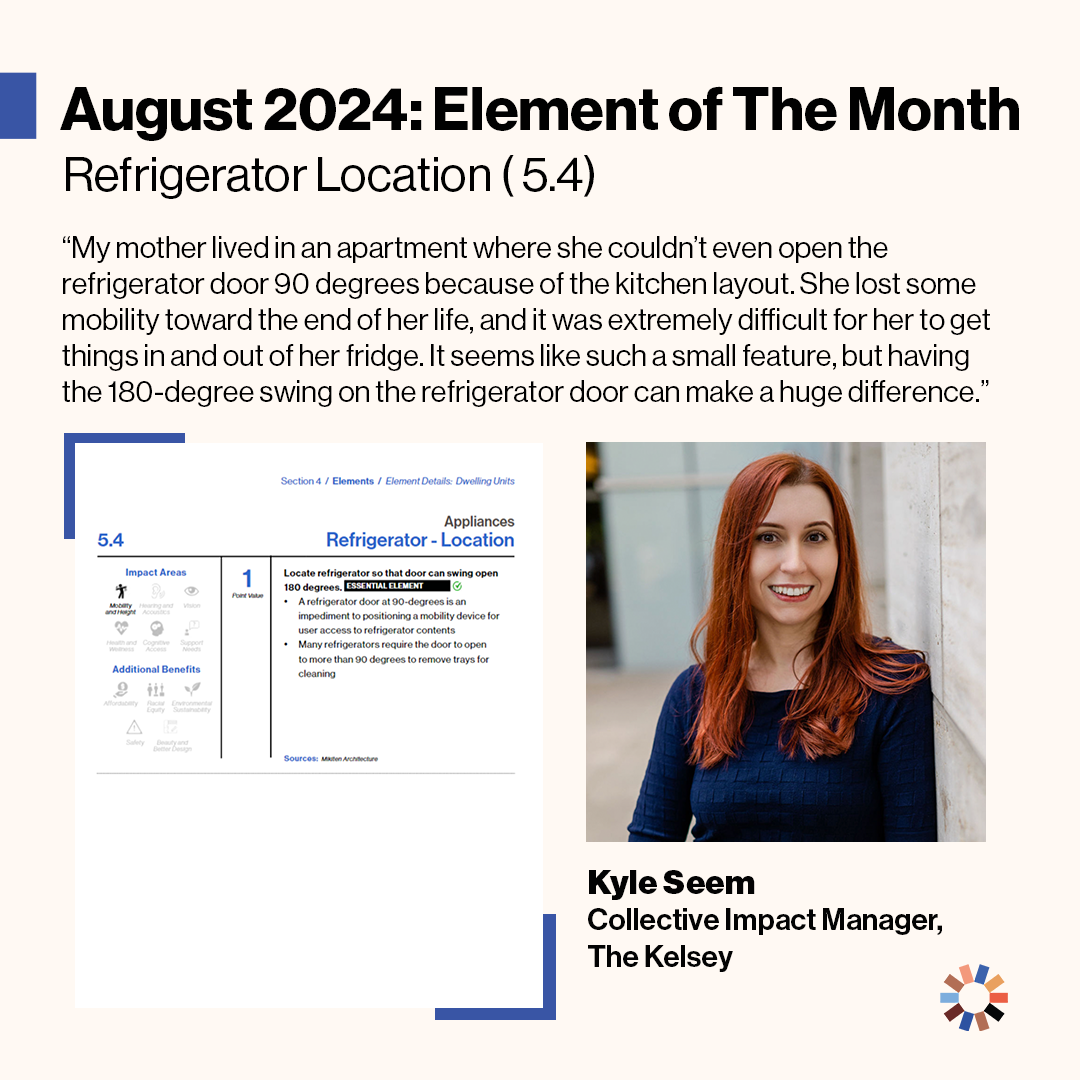The Inclusive Design Standards equip designers, builders, and developers with guidelines and frameworks for disability-forward housing creation. It highlights cross-disability accessibility and design decisions that are anchored in inclusion. Each month we feature one of our partners and the Element they’re most excited about.
Kyle Seem | Collective Impact Manager | The Kelsey

Kyle Seem recently joined our team in the role of Manager of Collective Impact. Before The Kelsey, Kyle spent five years working as an architectural designer with a specialty in Inclusive Design. This experience has given her a unique perspective on the Inclusive Design Standards, such as the element she chose to highlight this month, Refrigerator Location. Where a refrigerator is placed can be either a benefit or a hindrance to the person who is trying to access it. Kyle watched her mom struggle with the placement of her refrigerator with a limited opening and closing radius. Both Kyle and her mom longed for a refrigerator where the door is able to open more than 90 degrees. Accurate refrigerator placement creates easier access and gives those without mobility devices more room to access the contents of the refrigerator. When designing inclusive communities, refrigerator location is an element that is important to consider to ensure the accessibility of spaces.
Name of Element: Refrigerator Location ( 5.4)
Description:
• A refrigerator door at 90-degrees is an impediment to positioning a mobility device for user access to refrigerator contents
• Many refrigerators require the door to open to more than 90 degrees to remove trays for cleaning
Design Category: Dwelling Units
Impact Area(s): Mobility and Height
Additional Benefit(s): None
Why is this element important to you, personally or for the project?
My mother lived in an apartment where she couldn’t even open the refrigerator door 90 degrees because of the kitchen layout. She lost some mobility toward the end of her life, and it was extremely difficult for her to get things in and out of her fridge. It seems like such a small feature, but having the 180-degree swing on the refrigerator door can make a huge difference. It’s that kind of attention to detail that can make a home actually functional and truly comfortable.
How would you explain this element to a 2nd grader?
This element is about placing the refrigerator where the door can open all the way. That way, there will be more room for the person using the fridge.
What recommendations would you make to someone designing a disability-forward housing project (related to the design standards)?
Refrigerator placement should be thoughtful about the end user (residents). Placement should always extend to the ends of the counter, allowing doors to open fully or making sure the front of the refrigerator sticks out more than any cabinets on either side. If you’re using wing walls, make sure the wall is short enough for the refrigerator door to clear the wall when opened.
